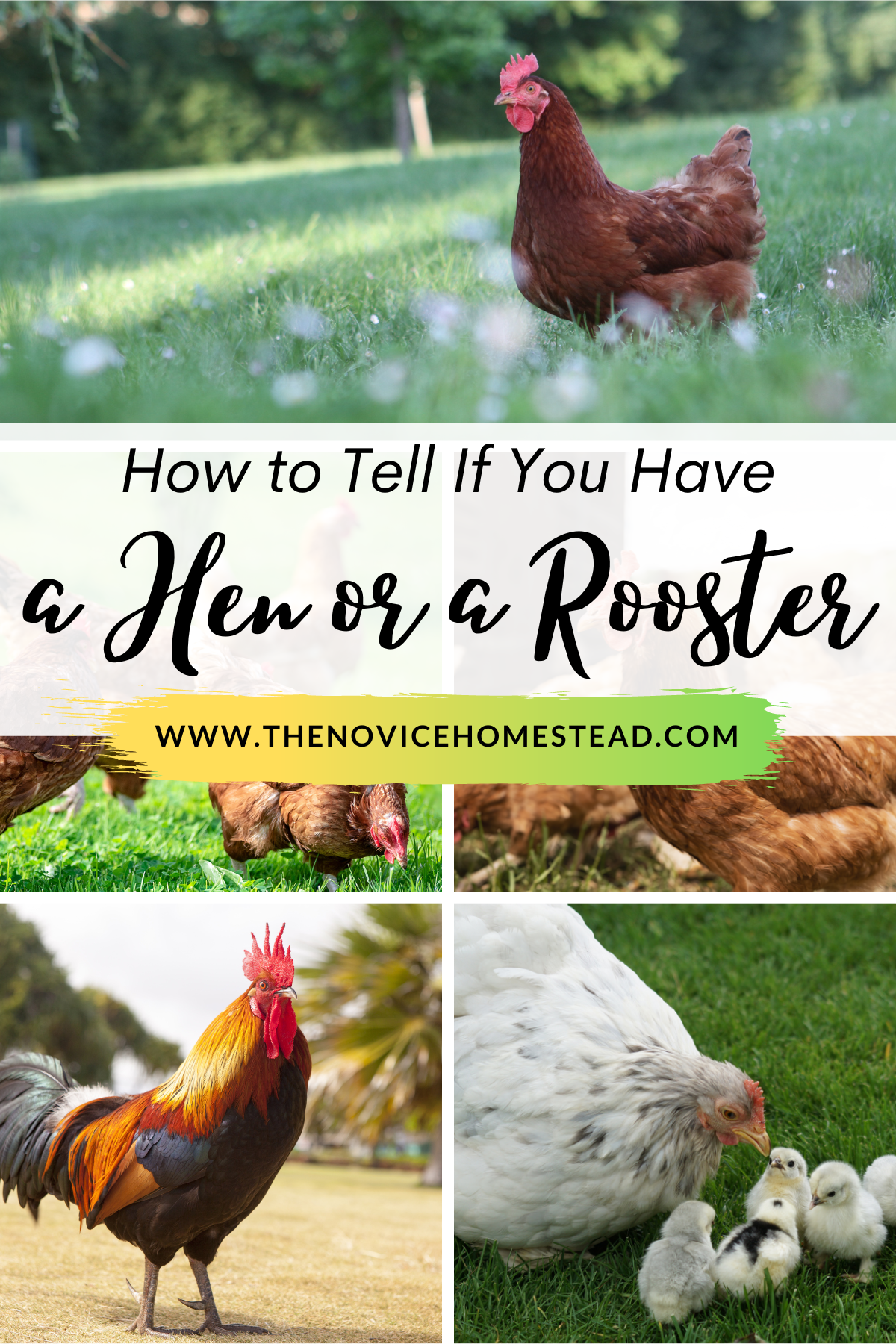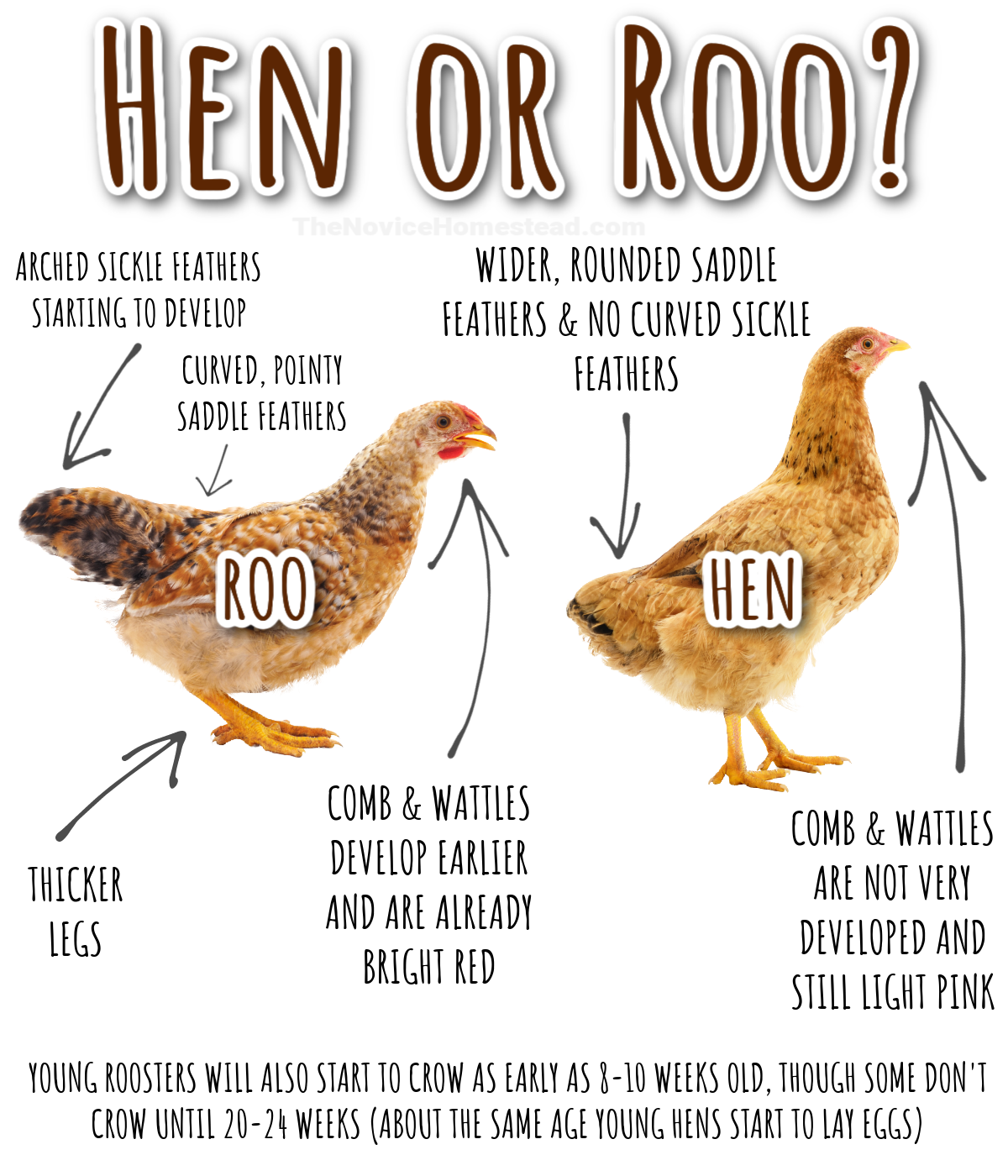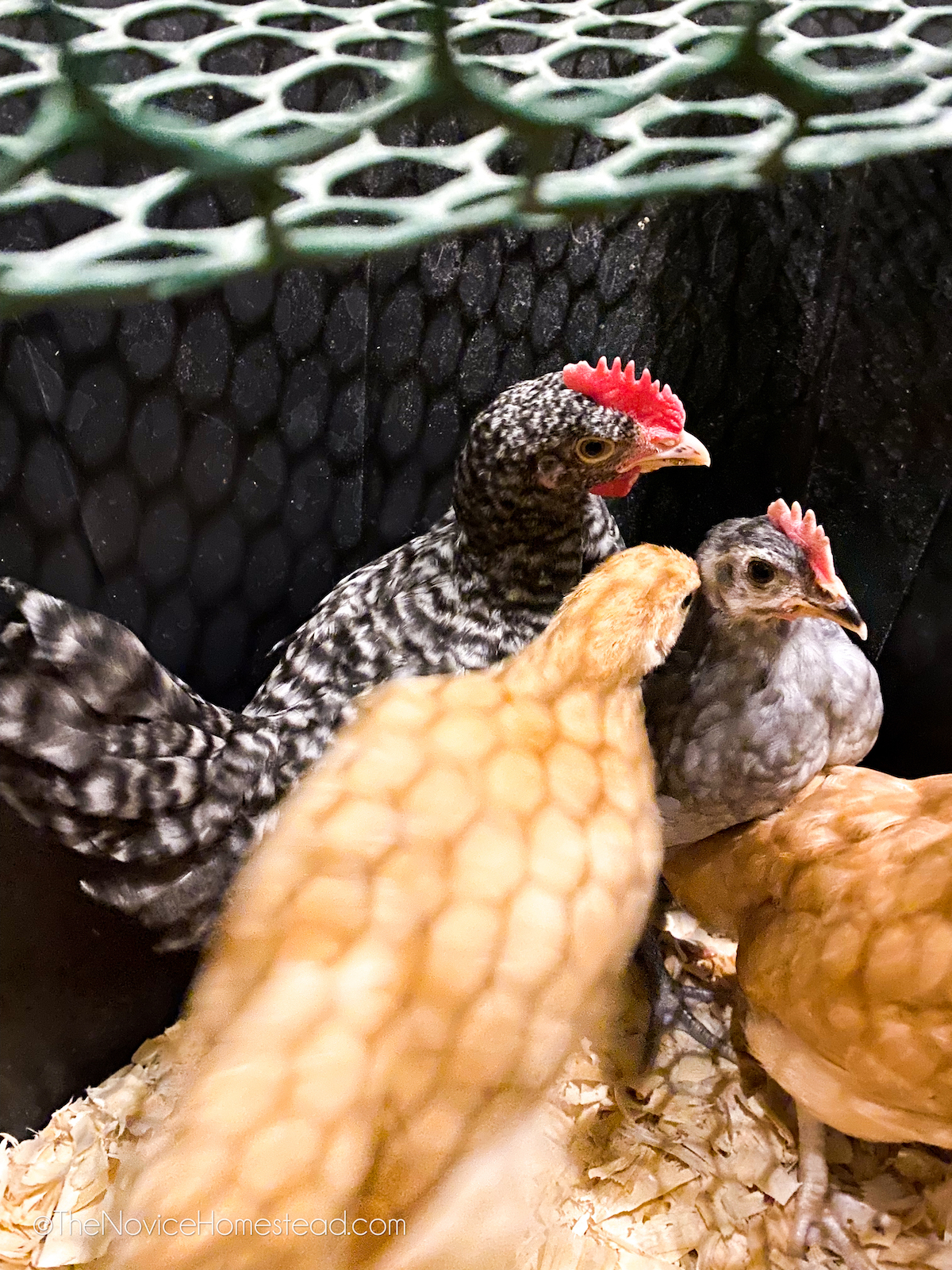Learn the ways to tell whether a chicken is a hen or a rooster with this helpful guide.

I belong to a lot of online homesteading groups and my favorite posts are the ones where the poster is asking “Do I Have A Hen Or A Rooster?” I love to examine their photos and make a guess…and I do have to say that I’ve gotten fairly good at it!
When you’re raising young chickens, it is helpful to know what sex of chicken you have. Perhaps you live within city limits and are not allowed to own roosters. Maybe your flock already has a rooster (and yes, there is such a thing as too many roosters in a flock). Or perhaps its just a matter of preference.
In any case, it is a good idea to familiarize yourself with key differences between roosters and hens.
When Can You Tell The Difference Between Hen And Rooster?
There are trained professionals that can tell the difference in hatchlings. Yes, a chicken sexer is a real job!
However, most of us will be able to start making educated guesses as to the sex of our chickens by 10-12 weeks. This is when some of the distinguishing characteristics start to develop, such as sickle feathers.
For the purpose of this post, I’ll be focusing primarily on the difference between cockerels (juvenile male chickens) and pullets (juvenile female chickens).

How To Tell If A Chicken Is Male Or Female
There are plenty of old wives tales about how to tell how to tell if it’s a rooster or hen – from flipping a coin to examining egg shape – but they’re not reliable.
However, there ARE a few pretty reliable ways to tell the difference between a juvenile rooster and a juvenile hen. There are also a few accurate ways to tell the sex of hatchlings, but I will be focusing more on juvenile birds (teenagers, if you will).
1. Purchase Sexed Chicks
Sexed chicks are baby chickens that have been sorted by gender, usually at the hatchery. This is done by using a process called vent sexing, which involves examining the vent, or opening, of the chick to determine the gender. Vent sexing is about 90% accurate.
This is the easiest way to end up with baby pullets if you’re looking to raise laying hens. Though I can attest from personal experience that it is not always accurate and it is possible to end up with a supposed “pullet” that actually turns out to be a cockerel.
If you’re hatching your own chicks, vent sexing should not be done unless you’ve had professional training, due to the risk of injury if performed incorrectly.
For example’s sake, let’s say that you purchased some chickens that were labeled as pullets. Now they’re getting older, and you suspect that you may actually have a rooster or two in the bunch…
2. Comb And Wattles
One of the earliest signs that you may have a baby rooster is the development of the comb and wattles.
Combs and wattles are fleshy growths on a chicken’s head that are made up of collagen fibers so they are flexible and kind of wiggly. A comb is on top of the chicken’s head, while the wattles hang from the sides of the chicken’s neck, where it meets the head.
In a full grown chicken, the comb and wattles will usually be red in color. The size and shape of a chicken’s comb will vary depending on the breed. However, in most breeds, the male has a much more pronounced comb and wattles, due to testosterone. This hormone is produced in greater quantities in male chickens and stimulates the growth of combs and wattles.
The comb and wattles of female chickens really start to develop around 5-6 months of age, right when they start to reach maturity. Until then, the comb and wattles of females are usually small and light pink in color.
On the other hand, the comb and wattles of cockerels may start to develop much sooner, as early as 8 weeks. They will turn bright red in color and become noticeable, even if they are not yet their full size.
For me, this is one of the easiest ways to notice a difference between cockerels and pullets of the same age and breed.

3. Tail Feathers
Roosters are known for their distinctive sickle feathers – long, arched tail feathers. Roosters also have long, pointy saddle feathers on their back, which often curl down over their wingtips by their time they’re fully grown. Whereas, hens have shorter, round saddle feathers and no sickle feathers at all.
These sickle feathers may be noticeable as early as a couple months of age, and they will become longer and more pronounced as the rooster nears maturity.
4. Hackle Feathers
While the difference in hackle feathers is fairly obvious in mature chickens, I always find this one a bit hard to tell while they’re still young.
Hackle feathers are the feathers that cover a chicken’s neck. On roosters, hackle feathers are pointy. On hens, hackle feathers are round.
5. Leg Size
Roosters often have thicker legs and larger feet, compared to hens of the same breed. I noticed this at a fairly young age, even before my boys started crowing. However, leg size alone is not quite enough to say for sure what sex of chicken you have.
6. Spurs
Spurs are sharp, pointed growths that protrude from the back of a rooster’s legs and are made of keratin, the same material that makes up human hair and nails.
Some hens may develop spurs (one of the hens in my flock has them), but they are much more common in roosters, and usually larger in size.
Spurs usually start to develop on cockerels at about 3 months of age, though this can vary by breed or by bird.
7. Personality
While personality is a bit subjective, it is said that cockerels are fiesty and active, while pullets are calmer. I did notice that with my boys they were little wild guys! They ran around and got all their flock-mates worked up.
When I’ve raised pullets by themselves, they are generally a tamer bunch. I don’t know is this difference is enough on its own, but it can play into the other distinctions between the sexes.
8. Crowing or Egg-Laying
This is the final, almost foolproof way to tell what you have a hen or a rooster. At some point, a rooster will start crowing…and the sound is unmistakeable. Yes, some hens may mimic the crowing sound, but I haven’t observed it in young birds. And even with my mature hens, their “egg song” is not really the same as a rooster’s crow.
And while is IS possible (though rare) that some hens won’t end up laying eggs, a rooster will NEVER lay eggs. So if your bird lays an egg, it’s a female. This is one absolute difference between hens and roosters.
In my experience, the crowing usually starts much earlier than egg laying. In fact, some of my cockerels started crowing around 10-12 weeks old, which is pretty early! The average age when a young rooster will start to crow is between 4 and 5 months of age (20-24 weeks).
Keep In Mind…
Most of these ways to tell the difference between a hen and a rooster are not going to be 100% accurate in every situation. But they can help you to make an educated guess while you wait for that first crow or first egg.
More Tips For Raising Chickens:
- How to Introduce New Chickens to a Flock
- Guide to Raising Baby Chicks
- What is Pasty Butt in Baby Chicks?
- When Do Chickens Start Laying Eggs?
- How Often Do Chickens Lay Eggs
- How Cold is Too Cold for Chickens to be Outside?
- Farm Fresh Eggs 101
- How to Keep Chickens Cool in the Heat
- How to Keep Snakes Out of a Chicken Coop
- How to Keep Chickens From Eating Their Own Eggs
- What is Fowl Pox?
- How to Keep Flies Out of a Chicken Coop